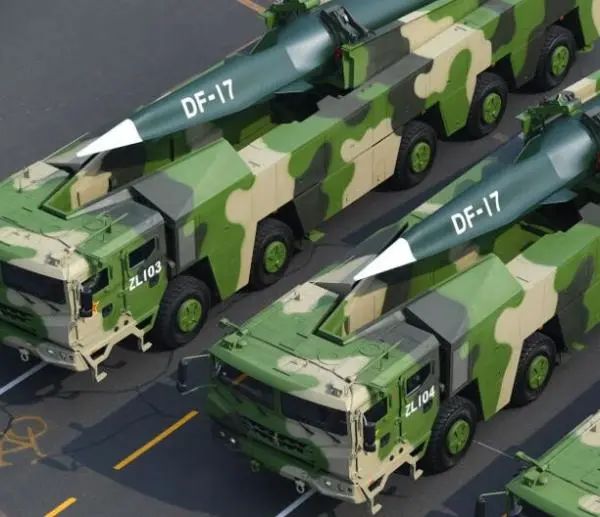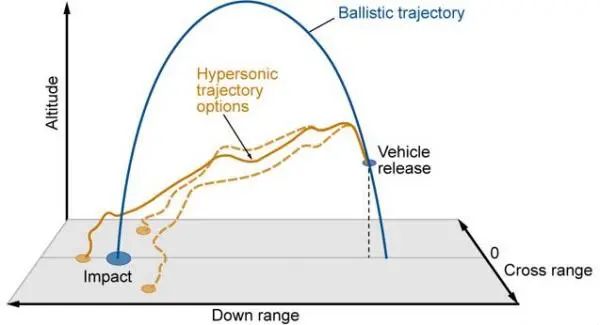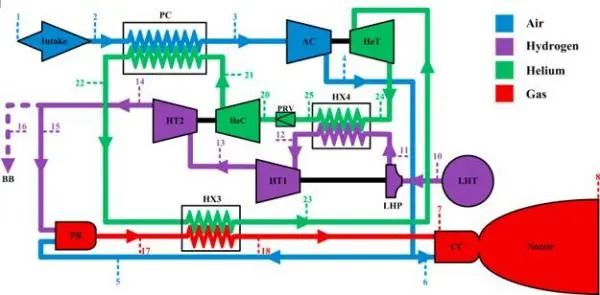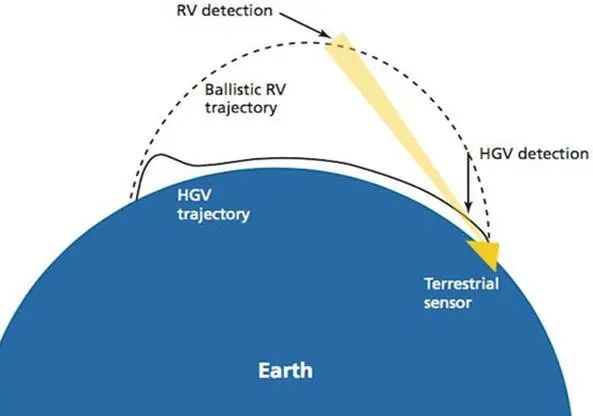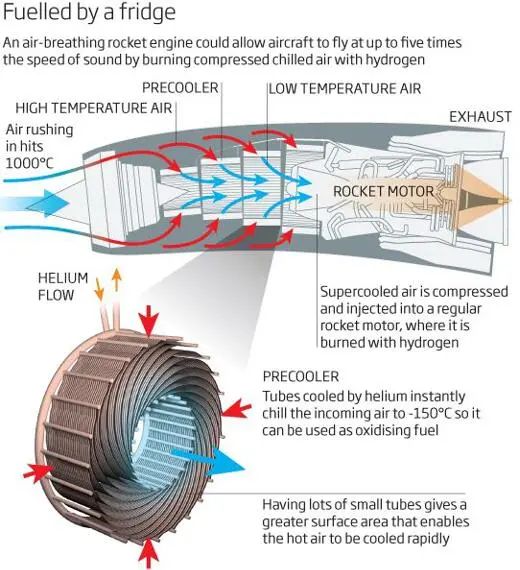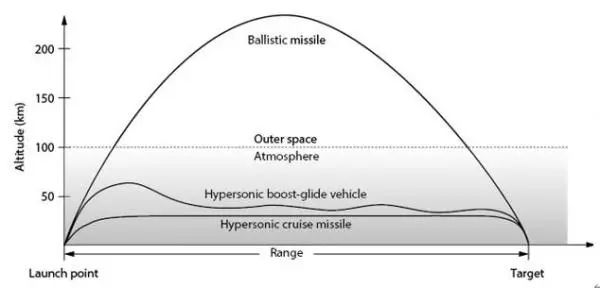All import trades from China to Turkey on Thursday were settled in renminbi for the first time under a previous agreement with PBoC, according to the Turkish central bank on Friday.
African group of 54 nations to investigate US
The U.N. Human Rights Council resumed this week with what it billed as an “urgent debate on racism, alleged police brutality and violence against protesters.” The African Group, a U.N. regional body composed of 54 African member states, requested the meeting, saying it would be “inconceivable” for the council not to address what it described as a worldwide problem.
African countries are reportedly also circulating a draft resolution that demands an investigation into U.S. police violence and racism. 6-17-20 https://thehill.com/policy/international/503202-george-floyds-brother-calls-on-united-nations-to-study-police-brutality
Foreign Minister Wang Yi spoke on the phone with his Indian counterpart, Foreign Minister Jaishankar
6-17-20, Foreign Minister Wang Yi spoke on the phone with his Indian counterpart, Foreign Minister Jaishankar.
Wang Yi said that on the evening of June 15, the Indian frontline border guard forces brazenly broke the consensus reached at the two sides’ military chiefs’ meeting in the Galwan Valley. When the situation on the ground had already eased, they once again deliberately provoked and even violently attacked officers and soldiers of the Chinese side who were on their way to negotiate across the Line of Actual Control. This led to violent physical confrontations, resulting in injuries and deaths. This adventurous act by the Indian army is a serious violation of the agreements reached between the two countries on the border issue and a grave breach of the basic norms of international relations. Again, a strong protest to the Indian side. We demand that the Indian side conduct a thorough investigation into the matter, punish those responsible, strictly control the frontline troops and immediately cease all provocative actions. to ensure that such incidents do not recur. The Indian side must not misjudge the current situation and must not underestimate China’s firm will to safeguard its territorial sovereignty.
Loss of soldiers in Galwan deeply disturbing and painful https://zeenews.india.com/india/loss-of-soldiers-in-galwan-deeply-disturbing-and-painful-rajnath-singh-after-20-army-personnel-martyred-in-india-china-clash-2290419.html
‘China did not enter our territory, no posts taken’: Modi at all-party meet on Ladakh clash
6-19-20 Exactly as the Chinese claim. https://www.hindustantimes.com/india-news/chinese-troops-did-not-enter-our-territory-says-pm-modi-at-all-party-meeting-on-ladakh-standoff/story-QGgGUyL3sVRYB7mp3Y8bBI.html
Soldiers’ deaths ‘won’t be in vain,’ Modi says 6-17-20 But they were. https://hk.appledaily.com/us/20200617/KIZXFL5SSQFNWNWFMOIJCBZKYI/
Ladakh Cong councillor booked over ‘seditious phone conversation’6-20-20 This guy is so eager to get a war started. https://indianexpress.com/article/india/ladakh-po
‘No restrictions on using firearms’: India gives soldiers freedom 6-21-20 https://www.hindustantimes.com/india-news/no-restrictions-on-firearms-india-gives-soldiers-freedom-along-lac-in-extraordinary-times/story-pCcFAcSAkMRschq50Tom1L.html
Oh you look so tough.
China successfully sent Gaofen 9-03, into orbit
China successfully sent another high-resolution remote sensing satellite, the Gaofen 9-03, into designated orbit on Wednesday via a Long March-2D carrier rocket from Jiuquan Satellite Launch Center in Northwest China’s Gansu Province. Together with the new Earth observation satellite Gaofen 9-03, a new IoT satellite named Hede-5 and ZDPS-3A, a new technology experimental satellite developed by Zhejiang University, were also sent into space during the Wednesday launch.
ASEAN Overtakes EU to Become China’s Top Trading Partner Not US, not EU
ASEAN Overtakes EU to Become China’s Top Trading Partner Not US, not EU
ASEAN overtook the EU as China’s largest trading partner in the first quarter of 2020.
This has been attributed to the extended lockdown measures within the EU and that the bloc will regain its position after the pandemic subsides.
Electronics, in particular, integrated circuits, have been a major contributor to the Q1 numbers, with China importing US$14.9 billion dollars’ worth over the three months.
In a post-pandemic economy, it is expected that the ASEAN bloc and China will strengthen their regional trade and become the engine of global growth.
The Association of Southeast Asian Nations (ASEAN) became China’s largest trading partner in the first three months of 2020, surpassing both the EU and the United States.
During this period, ASEAN-China trade increased by 6 percent year-on-year to US$140 billion and accounting for 15 percent of China’s total trade volume. This comes as the country’s traditional, largest trading partner, the EU, has been on lockdown. China’s imports from Vietnam and Indonesia rose by 24 and 13 percent year-on-year, respectively, highlighting the increasingly integrated supply chains between the two regions.
ASEAN had already become China’s second largest trading partner in 2019 with trade valued at US$644 billion, overtaking the US amid friction between the world’s largest economies. To offset the impact of the trade war, China looked to other regions to fill the gap, most notably ASEAN nations.
Analysts, however, expect the EU to regain its top position as China’s largest trading partner as the virus fades considering some 20 percent of the bloc’s total imports come from China.
Electronics pushes ASEAN trade to the top
Electronics have been a major contributor to the Q1 numbers, with China importing US$14.9 billion worth of integrated circuits from ASEAN countries, up by 25 percent in the previous year. This includes chip capacitors, microprocessor chips, and analog-to-digital converters; China exported some US$6 billion worth of integrated circuits to ASEAN.
With the increasing economic uncertainties caused by the US-China trade war, many Japanese and South Korean companies began transferring production to ASEAN, attracted by lower-wage structures as well as improving infrastructure and legal environment. These businesses have established integrated circuit factories in Malaysia, Vietnam, and Thailand, which in turn have been able to cater to the demand of the Chinese market.
These new production hubs do not mean the entire industrial chain has shifted to ASEAN, rather they have become an extension of the industrial chain in China. Many of these factories still require raw materials, equipment, expertise, and technology from China, and many are also dependent on Chinese consumers as their primary markets.
Can ASEAN retain its position?
When the pandemic resides, the EU is expected to regain its position as China’s largest trading partner.
Yet, as China slowly returns to pre-COVID-19 production levels, the country’s demand for mining products will benefit major producers in ASEAN, such as Indonesia, Malaysia, Myanmar, and Laos. Other sectors set to benefit from the resumption of China’s manufacturing are the region’s semiconductor and electronics industries, spurred by the development of 5G technology and the textiles and garment industry.
In the post-pandemic period, there will be efforts for greater regional trade integration among the ASEAN+3 (ASEAN+ China, Japan, and South Korea) economies, particularly as a counterweight against the rise of protectionism policies, and make these economies more resilient to volatility shocks.
This will be further supported by the finalization of the Regional Comprehensive Economic Partnership (RCEP) free trade agreement (FTA) later in 2020.
The proposed FTA will link the ASEAN members and China, Japan, South Korea, Australia, and New Zealand (India withdrew from the agreement), in what is expected to be the world’s largest FTA, encompassing 3.4 billion people and one-third of global GDP. (Australia and India is at war with China, so FTA not likely)
Increasing market access, reduction in tariffs, and the opportunity to facilitate small and medium-sized businesses (SMEs) in ASEAN to integrate regional supply chains will make products from ASEAN more competitive and position the bloc as a key player of global growth, after the pandemic.
Advice for overseas Chinese firms in hostile climate
Alongside the growth of China’s export-oriented economy, expanding overseas investment has become an important way for enterprises to participate in international economic cooperation, as well as remaining an internal requirement for firms developing internationally.
However, with the rise of international trade protectionism in recent years, particularly affected by China-US trade frictions, Chinese firms are facing increasing disadvantages in the global investment environment.
The EU is considering expanding its censorship toward foreign takeovers, Reuters recently reported. This has been seen as an attempt to deter Chinese buyers from mergers and acquisitions in more industries in Europe. US President Donald Trump has also issued a presidential memorandum calling for tougher accounting scrutiny of US-listed Chinese companies, arguing that Chinese companies have taken advantage of US financial markets but refused to comply with US regulatory standards. The US Senate earlier also passed the Holding Foreign Companies Accountable Act, aiming to tighten regulations on US-listed foreign firms.
Under the guise of protecting American investors, the US actually intends to restrict Chinese companies’ participation in US financial activities by limiting them from going public in US stock markets, and ultimately aims to suppress China’s economic development.
The global capital market is a vital economic foundation for Western countries, and it was fairness, legislation and marketization that facilitated the rapid growth of the global capital market. Any move for political or discriminatory purposes would damage the market drastically and would be doomed to backfire. As COVID-19 continues to ravage the US, will Washington continue and make new conflicts in its capital markets, and blindly ignore market risks and its difficult position on the road to economic recovery?
Under such complex and changing circumstances, Chinese firms should not only attach importance to risks, but should develop dauntlessly with stronger capacities. That is the only way companies will be able to acquire a more solid stance.
For starters, Chinese firms need to closely follow changes in the international market to adjust their business strategies accordingly, paying great attention to compliance-related work and strictly abiding by local laws and regulations, so as to build a good image of Chinese companies based on principles of transparency and honesty.
Next, firms need to further shore up internal administration, putting rules in place. Employee quality and ability needs to be enhanced to adapt to complicated business environments and strict regulatory requirements.
Also, it is important for firms to learn local laws and culture – particularly those related to their business – and maintain fair communication with related regulatory institutions. They also need to remain on high alert to deal with any emergency situations that may arise.
In the meantime, governmental departments on both sides need to enhance communications. Chinese-related departments should accept and urge Chinese firms to strictly follow reasonable rules and regulations, and for unreasonable claims which go against market rules, governmental departments are responsible for opening negotiations to protect Chinese firms’ legitimate rights and interests overseas.
Chinese firms also need to actively expand cooperation with Europe against the backdrop of persisting China-US trade conflict. As all countries are currently facing severe economic difficulties, China and the EU should break through the obstacles of bilateral cooperation through win-win cooperation, accelerate negotiations on the China-EU bilateral investment treaty, and expand the space for China’s export-oriented economic development.
China to build 600k 5G base stations in 2020
China is expected to build more than 600,000 5G base stations by the end of the year, and the shipment of 5G smartphones will reach 180 million units, said an official with the country’s top information technology watchdog on Saturday.
As 5G are going mainstream in China, the country embarks on a 10-year long march of developing 6G technologies. But industry analysts said China needs to overcome its shortcomings in chip and operating systems in order to take the lead in next-generation information technology.
600-second run time in a ground test of a super-combustion ram engine
(Machine translated) The Institute of Mechanics of the Chinese Academy of Sciences 中国科学院力学研究所 quietly released a message that 范学军 Fan Xuejun’s team achieved a continuous 600-second run time in a ground test of a super-combustion ram engine, breaking the world record of 210 seconds for an American X-51 research aircraft. in 2016, India announced that it had achieved a super-combustion ram-powered M6 high supersonic flight, but the engine worked for only five seconds. Not long ago, the Ministry of Science and Technology announced the second national innovation first prize list, 北航 high supersonic speed strong pre-cooling team won the award, also attracted great attention. The significance of these two breakthrough technologies is immense. Hypersonic speed is at the forefront of aerospace technology. This is also the gray area between aviation in the lower atmosphere and the outer space. In between, the high supersonic speed of flight not only allows the M5-20 to fly at very high speed, but also has considerable maneuverability.
On 70th anniversary of the National Day in 2019, China made a display of the 东风 Dongfeng 17 hypersonic missile, which represents the highest level of hypersonic speed currently available, but this is still the hypersonic glider (HGV for short). In other words, after the missile is propelled to near ground altitude with a rocket engine, it changes attitude and transitions into a hypersonic glide.
Compared to ballistic missiles, HGVs have a low flight altitude, and because of the curvature of the Earth, the ground radar’s detection range is much lower than that of ballistic missiles, and the cruise altitude of the early warning aircraft does not fundamentally solve the problem. Space-based detection in orbit is theoretically not limited by field of view, but conventional missile warning is based on the huge tail flames and initial trajectory of the missile at launch to infer trajectory, HGV still has the tail flames problem at launch, but after switching to glide, it can completely get rid of simple trajectory by its maneuvering capability, making the trajectory of the missile unpredictable. While it is theoretically possible to track with an on-board radar the entire time immediately after detection of launch, tracking of medium-orbit satellites requires a large on-board radar, while low-orbit satellites require a dense constellation and “dynamic-to-active” gapless relay tracking. Infrared photonics tracking not only has similar optical aperture problems, but also faces the problem of detecting faint HGV thermal features in the complex thermal environment of the Earth’s surface. In the foreseeable future, space-based detection will also have insurmountable technical difficulties. Without effective tracking, you can’t talk about effective interception, so the HGV has a higher assault capability than a faster but dull ballistic missile. It is for this reason that HGVs have become the focus of military research in various countries. China has not only the Dongfeng 17, but also the Dongfeng 26, which also has the ability to glide at high supersonic speeds. The Russian “pioneer” is the Intercontinental HGV, which reaches the extreme high speed of the M27. The U.S. is behind, and after a dizzying array of fast-track R&D plans, it’s finally starting to get a bit of a head start. However, the range of the HGV depends on the altitude reached by the booster section or the leveling acceleration in the atmosphere, the former increasing the difficulty of the smooth transition from the abrupt back to horizontal sliding, the latter forcefully twisting the booster section of the ballistics and spending fuel.
Higher up the hierarchy than the HGV is the high supersonic cruise missile. Cruise missiles are an ambiguity-prone designation, which is really an umbrella term for all missiles that are powered at the vast majority of their range, and high-subsonic cruise missiles that sweep the ground are just one type of cruise missile. Most tactical missiles are not called cruise missiles because the rocket engine only works for a short time and the main part of the range is gliding flight. This is true not only for ballistic missiles, but also for air-air, air-ground and even anti-tank missiles. The only common missiles are anti-ship missiles and land-attack cruise missiles that are fully powered. The hypersonic missile is called a hypersonic cruise missile (HCM) because it is powered by a super-combustion ram engine.
Compared to the HGV, the HCM has a larger range and more difficult ballistics to detect, and all of the HGV’s energy comes from the booster stage rocket engine. A rocket engine with its own oxidizer always is heavier than a jet engine that can suck oxygen out of the air. In the case of a kerosene-liquid oxygen rocket, the ideal combustion air-to-air ratio is 15:1, i.e., each kilogram of aviation kerosene requires 15 kilograms of oxygen to burn completely. You can save volume with liquid oxygen, but the weight is still the same. If oxygen could come from air, in theory, all of that 15 kg of liquid oxygen weight could be diverted to kerosene, with an increase in range .
The longer operating time of the jet engine also means that there can be longer acceleration times, the same top speed can be reached with less initial energy, and the same top speed can be maintained for longer. More power from a jet engine also means allowing for more maneuverability, since maneuvering is about expending energy. Unlike HGVs that can only do relatively simple lateral maneuvers, HCMs can do more complex maneuvers and even evasive attacks.
HCM’s boosters are simply accelerated to ignition speed for super-combustion ramming, so the booster requirements are greatly reduced, helping to reduce the size and weight of the booster. A smaller booster means a smaller thermal signature at launch, and the super-combustion ram itself has a much smaller thermal signature than the rocket engine, meaning that the HCM is virtually impossible to capture by space-based probes, further enhancing its ability to resist early warning. High supersonic missiles are already difficult to intercept, and interception without warning is almost impossible. The HCM is the ultimate hypersonic weapon. The U.S. had wanted to develop HCM directly in one step, but was stuck on the power issue; although the X-51 reached 210 seconds, it was a highly optimized test condition, and its operating time was too short to be practical. When the United States slowly progresses, China quietly caught up, and at once made a breakthrough in two key technologies.
Of the various known aerodynamic forces, rocket engines have too short an operating time for conventional turbojet engines to break above M2.5, and conventional sub-combustion ramming is difficult to break above M4, as the increase in drag is already faster than the increase in thrust. Only super-combustion ramming can be used for HCM, which is both a ramming engine and a jet engine, unlike the turbo-mechanics of a conventional turbojet engine. A super-combustible punch is a hollow tube in appearance, but there’s a lot more to this hollow tube. In contrast to sub-combustion ramming, the inlet compression, combustion and formation of thrusts in super-combustion ramming are carried out at supersonic speeds. Compared to sub-combustion ramming which requires lowering the intake to subsonic speeds and then accelerating the gas to supersonic speeds, the drag is greatly reduced. However, under supersonic conditions, not only is the combustion difficult to stabilize, but there is also the problem of high temperatures, which can easily exceed the temperature resistance limit of the structural material. The main contribution of the FAN team is the active cooling technology of the hot end components.
Engines powered by combustion usually have some sort of cooling. Automotive engines are essentially liquid-cooled, with the circulating coolant taking heat away from the engine and sending it through the radiator into the air; jet engines rely primarily on air flow and gas ejection to take heat away. But active cooling spreads under the surface of the hot end engine components (in the case of super-combustion ramming, that’s the combustion chamber and nozzles) in capillaries that pass into the hydrocarbon fuel, taking heat away in the flow and lowering the surface temperature. The actual temperature of the hydrocarbon fuel after heat absorption rises above the ignition temperature, but only rises due to the anaerobic environment and does not burn. However, when hydrocarbon fuel is injected into the combustion chamber, it is naturally depressurized on the one hand, and mixed with oxygen in the incoming gas and burned naturally on the other, which is more efficient and reliable than the usual ignition.
Hydrocarbon fuel is an advanced form of fuel oil, which can be easily converted to liquid hydrogen for greater heat absorption and combustion efficiency. However, liquid hydrogen is more complex to prepare and store than hydrocarbon fuels, and is less stable at room temperature and pressure. Fan Xuejun’s team uses hydrocarbon fuel, which is less expensive and more stable.
The rationale for active cooling isn’t complicated and the benefits are obvious, but the devil is in the details. The flow of hydrocarbon fuel in capillaries requires consideration of blockage. The distribution of capillaries is of great importance, it is not necessary to be too fine, cooling is not achieved if too large. The bigger problem is that in the flow network, the preferential flow makes the flow distribution deviate from the expected uniformity, and in a bundle of seemingly similar tubes, the flow rate inside the tubes may not be even. Midway interconnection between paths can be made up with bypass flow when part of the path is blocked, but further complicates the problem of achieving optimate flow. The problem of gas resistance after the fluid is heated and vaporized has to be avoided also.
Fan Xuejun’s team not only solved a large number of theoretical and design problems, but also built a large test set in 怀柔, solving engineering problems and bringing the research results to a high level of technical maturity.
Fan Xuejun received his PhD in Princeton and became a researcher and PhD director of the Institute of Mechanics, serving as an expert in the professional group of delivery technology of a certain ministry, an expert in the national major special fuel group and the chief technology of a certain major project. He took the lead in conducting research on active cooling engine technology in China and built the first set of active cooling technology comprehensive test platform at the 怀柔 base of the Institute of Mechanics, which is at the international leading level in technology. He led the development of China’s first active cooling combustion chamber and passed a long test. In recent years, the company has published more than 50 papers in domestic and foreign magazines, more than 100 conference papers and national defense technical reports, and applied for more than 30 invention patents and has authorized nearly 20 inventions. But this isn’t the only top team in China’s hypersonic research army; 北航 Beihang’s hypersonic strong precooling team is another.
Active cooling technology improves the heat resistance of the hot end components of the engine, which can be further improved by strong pre-cooling of the intake air. Not long ago, the SABRE engine in the UK achieved strong pre-cooling, cooling an intake of 1000 degrees to minus 150 degrees in 0.01 seconds. That’s quite an achievement. The specific techniques and applications of the 北航s team were not published, but are of the same nature.
Strong pre-cooling not only dramatically increases the high temperature resistance limit of the hot end components of the engine, but also drastically reduces the volume of air intake and increases the air intake density. This results in a significant reduction in the volume flow of the compressor at the same inlet volume flow, or a significant increase in the oxygen content of the air stream at the same compressor volume flow. The former can be equated with an increase in the upper limit of air inlet velocity, making the same engine technology work at higher speeds; the latter is particularly important for very thin air at very high altitudes, allowing jet engines to work steadily at higher altitudes, reducing air frictional resistance, otherwise it would be necessary to use heavy, costly and short working time of the rocket engine. SABRE is exactly that.The full name of SABRE is Synergetic Air Breathing Rocket Engine, which means Accompanying Aspirated Rocket Engine. This is a new concept hybrid engine for the horizontal take-off, single-stage, orbiting space shuttle, which uses strong pre-cooling to maintain the working state of drawing oxygen from the air all the way to M5 and ultra-high altitude, before being transferred to rocket power and into space flight.
Specifically, the incoming air, after being strongly pre-cooled in a pre-cooler (PC), reaches high pressure through an air compressor (AC); part of it enters the combustion chamber (CC), where it is mixed with the pre-fired hot, oxygen-poor, hydrogen-rich gas and burned to generate thrust through a nozzle; most of the air enters the pre-fired chamber (PB), where it is mixed with the hydrogen and burned to heat helium gas. The helium gas is heated to expand and drives a helium turbine (HeT) to drive the gas press. The helium gas, which is still very hot after being cooled down, is heated and vaporized by a heat exchanger (HX4) to form a high pressure, which drives a hydrogen turbine (HT1) to drive a liquid hydrogen pump (LHP) to pump liquid hydrogen from a liquid hydrogen storage tank (LHT). There is still enough hydrogen pressure left to continue to drive another hydrogen turbine (HT2) that drives a helium refrigeration compressor (HeC) for the pre-cooler, just as a Freon compressor in a refrigerator supplies refrigerant. In fact, helium is the equivalent of Freon here.
SABRE’s thermodynamic cycle is complex and sophisticated; SABRE was not originally designed for super-combustion ramming; the use of aspirated rocket engines avoids the problem of super-combustion ramming, and high supersonic speeds within the atmosphere are only a transitional phase, providing the highest possible starting speed and altitude for rocket powered flights outside the atmosphere. But properly simplified, SABRE’s thinking can also be applied to super-combustion ramming. For example, by eliminating the helium loop, the fuel pumped out goes directly to the pre-cooler and hot end cooling system, heating gasification generates high pressure, and the driven turbine drives the fuel pump directly. This way, even the pre-combustion chamber can be eliminated.
Active cooling and strong pre-cooling are both thermal management techniques for super-combustion ram engines. People often focus on the combustion stability of super-combustion ramming, which is indeed a huge technical challenge, as tough as a controlled explosion, but thermal management is an equally huge challenge. China hinted at a fairly high level of technical maturity in super-combustion stamping technology at the landmark Xiamen International Conference in 2017. Thermal management technology has also now reached a high level of technical maturity, and what is not publicly available is only a high supersonic flight test of a complete super-combustion ram engine with advanced thermal management.
The significance of the practicality of super-combustion stamping cannot be overstated. Only the appearance of the Dongfeng 17 was made public at the National Day 70 celebration, the range was not announced, and is estimated to be in the 1800-2500 km range. By using super-combustion ramming and changing from HGV to HCM, only a small booster rocket is needed for take-off, and the weight of the large amount of oxidizer used can be converted to fuel, greatly increasing the range. Even accounting for the heavier super-combustion ram engine and auxiliary systems, the increase in range is conceivable. Even if it is not possible to increase the range by a factor of 15, but only by a factor of 5, it will be possible to achieve a range of 9000-12500 km with roughly the same full system size and weight. If the Dongfeng 17 is still just “Guam Express”, then “Super Dongfeng 17” is not just Guam Express, but “Hawaii Express”, “Los Angeles Express”, the military significance is self-evident.
China’s high-tech research and development of military significance has a tradition of secrecy, and the complete super-combustion ramming test with heat management has been carried out or not, and whether it was successful or not, the outside world can only speculate. But one needn’t be too surprised to find out where another innovation award was quietly declared not too long ago, or where a brand new HCM was swooped in at a major celebration.
On the other side of the Pacific, the U.S. tested the successful C-HGB on March 19, an HGV common to all three armies, but still using the first-generation bicone (also known as a spintron), rather than the more advanced multiplier used by Dongfeng 17. On the other hand, the United States Under Secretary of Defense for Scientific Research Griffin, speaking about hypersonic research, specifically mentioned the lack of access to thermal management in the United States, which has reduced the range of hypersonic missiles, which would have reached 3,000 km, to 1,000 km. If China is still a step away from HCM, the United States is yet to cross the midfield. Hypersonic speed is one of the few military-industrial technologies in which China holds a decisive lead, which happens to be the core military-industrial technology that will be critical to future wars.
The Launch of 2020 National Joint Planting of Seawater rice
The Launch of 2020 National Joint Planting of Seawater rice in Qingdao and Weifang, Shandong Province, Qinghai Province and Wenzhou, Zhejiang Province. The launch of the seawater rice was led by Yuan Longping, an academician of the Chinese Academy of Engineering, and his team. This year the national sea rice plantation area will be expanded to 16,400 acres, the team also carried out saline soil transformation of 164,000 acres, and strive to lay out 1.64 million acres of saline land transformation in the country, in order to eventually transform 16.4 million acres nationwide.
Australia announced the biggest shakeup of its foreign investment laws
Australia announced the biggest shakeup of its foreign investment laws in almost half a century on Friday, including giving the government the power to force the sale of a business if it creates a national security risk.
Citing the need to balance economic and national security, Treasurer Josh Frydenberg said all foreign investors will face greater scrutiny when bidding for sensitive assets, regardless of the size of the deal and whether the buyer is private or state-owned.
“Technology has been evolving and our geopolitical climate has become more complex,” Frydenberg said in Canberra. “In fact, the world over, governments are seeing foreign investment being used for strategic objectives not purely commercial ones.”
In one major change, the Treasurer will be given a last-resort power to vary or to impose conditions on a deal or force a divestment after the deal has been approved by the Foreign Investment and Review Board (FIRB). A Treasury document said the power would not be retrospective.
Prime Minister Scott Morrison said compliance would also be tightened, with the government to spend an additional $50 million on enforcement of the rules. A Treasury spokesman told Reuters extra resources would go to the Australian Security Intelligence Organisation (ASIO) as well as the Taxation Office, Department of Home Affairs and Treasury.
Frydenberg did not provide details of which business sectors would be captured by the national security test and subject to FIRB’s scrutiny, but he did give some indication of areas of interest.
The definition would likely cover telecommunications, energy and utilities firms, the defence supply chain, and businesses that collect, store and own data deemed critical to Australia’s national security and defence, he said.
Scott Phillips, a partner at M&A law firm Arnold Bloch Leibler, said it was crucial the categories be carefully defined at a time the Australian economy has been hard hit by the coronavirus pandemic.
“While sensible on the face of it, these changes carry a very real risk of discouraging much needed, national interest investment as Australia heads into our first recession in 29 years,” Phillips told Reuters.
Under current laws, most private investments under A$275 million ($190.8 million) are not screened by FIRB, while the threshold is A$1.2 billion for companies from countries such as China which have free trade agreements with Australia. The threshold is zero for state-owned enterprises.
The government plans to release a draft of the proposed changes by next month for legislative debate with planned implementation on Jan. 1, 2021.
Changes could affect deals such as the current sale of Virgin Australia (VAH.AX). The frontrunners for the country’s No. 2 airline, which is being sold by administrators, are U.S. private equity firms Bain Capital and Cyrus Capital.
Frydenberg did not single out China, or any other country, when announcing the overhaul, but the Chinese government has previously raised concerns with Australia about changes to foreign investment rules.
Public disquiet over the sale of the Port of Darwin in 2016 to Chinese company Landbridge led to new rules requiring FIRB approval for critical infrastructure deals. FIRB blocked two proposed investments by Chinese companies in Australian listed mining companies in late April, raising concerns by bankers and fund managers of a strategic shift in the government’s thinking.
China dropped from second to fifth in the list of countries providing the largest sources of approved foreign investment in Australia for 2018-2019. The US was first, followed by Canada, Singapore and Japan in 2018-2019.
Business Council chief executive Jennifer Westacott said the government should ensure that low risk investments were “streamlined and approved quickly so businesses can attract the global investment they need to get on with creating jobs.”https://www.reuters.com/article/us-australia-investment/australia-shakes-up-foreign-investment-laws-for-national-security-idUSKBN23C01J

